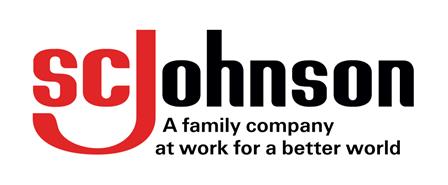SC Johnson Insect Experts Debunk 5 Common Myths About Using Personal Insect Repellents
Scientists get candid about active ingredients found in many insect repellents
RACINE, Wis., August 13, 2018 /3BL Media/– Whether you’ve been spending the summer in your backyard, at the beach or hiking in the woods, you’ve probably encountered familiar insects like mosquitoes and ticks – and their bites. The insect experts at the SC Johnson Institute of Insect Science for Family Health want to help you and your family defend yourselves from bug bites. Their advice: Planning for the insects you will meet outdoors is the first step to enjoying summer fun.
“Using insect repellent regularly is the first line of defense from bug bites and the insects, like mosquitoes and ticks, that may carry serious diseases,” said Kelly M. Semrau, Senior Vice President – Global Corporate Affairs, Communication and Sustainability at SC Johnson. “Families should plan ahead for extended periods outdoors by selecting the right personal insect repellent to fit their activities.”
Personal insect repellents come in many forms including lotions, creams, towelettes and aerosol sprays. Yet most of them have something in common – an active ingredient. The most popular active ingredients in skin-applied personal insect repellents are DEET and Picaridin. While both DEET and Picaridin, which is also known as Icaridin or Saltidin, have been available to consumers for decades, there are still questions and misconceptions about these active ingredients. That’s why the entomologists from the SC Johnson Institute of Insect Science for Family Health are debunking five common myths:
MYTH 1: DEET and Picaridin are unstudied/unsafe chemicals.
FACT: DEET was developed by the United States Department of Agriculture (USDA) for use by U.S. Army personnel in mosquito-infested areas in 1946 and it has been available for consumer use since 1957. DEET is the most commonly used active ingredient in personal insect repellents, and products containing this active have been available for over 70 years. Likewise, Picaridin is a synthetic compound similar to the natural substance piperine found in black pepper plants. Like DEET, this active has been approved by many regulatory bodies around the world and has been evaluated for safety and efficacy when used according to the label.
MYTH 2: I still get bitten even though I’ve used a repellent. These products are not effective in repelling mosquitoes and ticks.
FACT: Applying a personal insect repellent correctly is an essential part of protecting yourself from getting bitten. Every type of product has specific instructions for application, so always consult and follow the directions on the product label before applying. In order to get the best result, be aware of when reapplication is needed. Most products recommend reapplying the personal insect repellent if there has been excessive sweating or swimming; however, heavy application does not give you better protection.
MYTH 3: DEET and Picaridin kill mosquitoes and ticks.
FACT: DEET and Picaridin do not kill mosquitoes or ticks but they do repel them. DEET, Picaridin and other active ingredients work by forming a vapor barrier at the skin’s surface which helps to keep mosquitoes and ticks off your skin and from biting you.
MYTH 4: DEET and Picaridin are the only effective active ingredients for insect repellency.
FACT: There are other recommended active ingredients including IR3535, Oil of lemon eucalyptus (OLE) or p-Methane-3,8-diol also known as para-menthane-3,8-diol or PMD. These actives are registered with regulatory bodies around the world and have been evaluated for safety and efficacy when used according to the label. Based on personal preferences, outdoor activities and duration of need, it is easy to find an effective insect repellent.
MYTH 5: The higher percentage of an active ingredient, the better protected I am.
FACT: The level of active ingredients in repellents only determines how long the protection lasts.
It is important to consider the activities that will be performed, the length of time you will be outside and the type of insects you may come in contact with to determine the concentration of active needed when buying a repellent. It’s important to read the product label first to make sure you are choosing the product that’s right for you and your family, and always follow instructions for application and use.
Contact:
SC Johnson Global Public Affairs
262-260-2440
###
About the SC Johnson Institute of Insect Science for Family Health
The SC Johnson Institute of Insect Science for Family Health – previously known as the SC Johnson Entomology Research Center – was established in 1957. Its main location in Racine, Wisconsin, is one of the world’s largest private, urban entomology research centers. In 2013, SC Johnson expanded its research operations globally, opening the first-of-its-kind research facility in China. Company researchers study and advance the sciences of insect biology, physiology, ecology, behavior and toxicology. The Institute also tests pest control formulations and delivery systems to help families protect themselves from insects and the diseases they may carry. For more information, please go to www.scjohnson.com/mosquitoes
About SC Johnson
SC Johnson is a family company dedicated to innovative, high-quality products, excellence in the workplace and a long-term commitment to the environment and the communities in which it operates. Based in the USA, the company is one of the world's leading manufacturers of household cleaning products and products for home storage, air care, pest control and shoe care, as well as professional products. It markets such well-known brands as GLADE®, KIWI®, OFF!®, PLEDGE®, RAID®, SCRUBBING BUBBLES®, SHOUT®, WINDEX® and ZIPLOC® in the U.S. and beyond, with brands marketed outside the U.S. including AUTAN®, TANA®, BAMA®, BAYGON®, BRISE®, KABIKILLER®, KLEAR®, MR MUSCLE® and RIDSECT®. The 132-year-old company, which generates $10 billion in sales, employs approximately 13,000 people globally and sells products in virtually every country around the world. www.scjohnson.com

